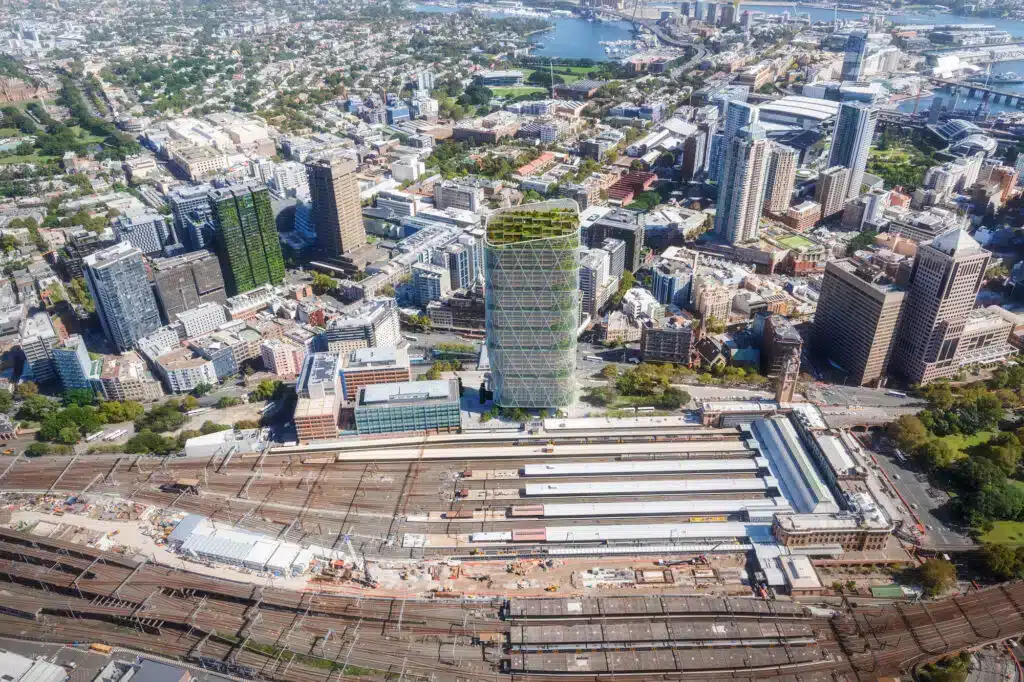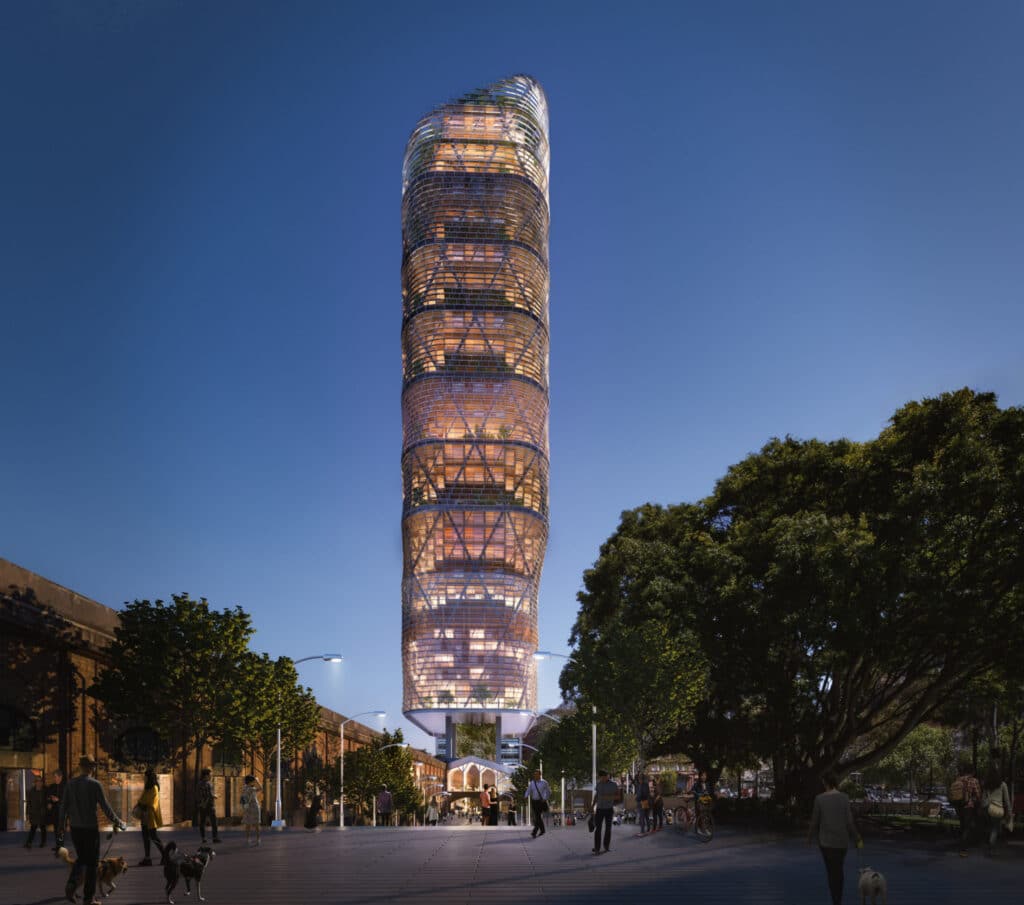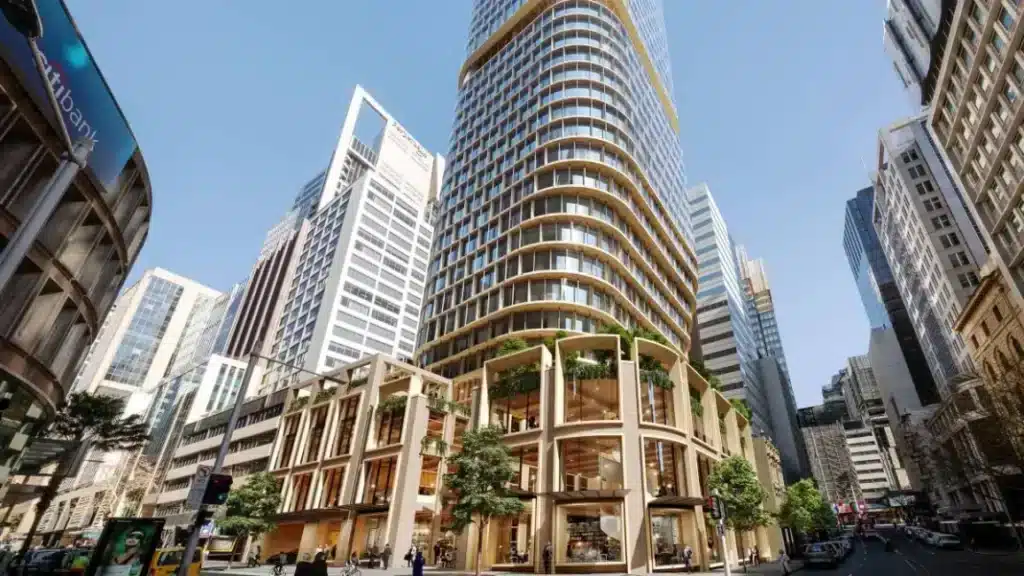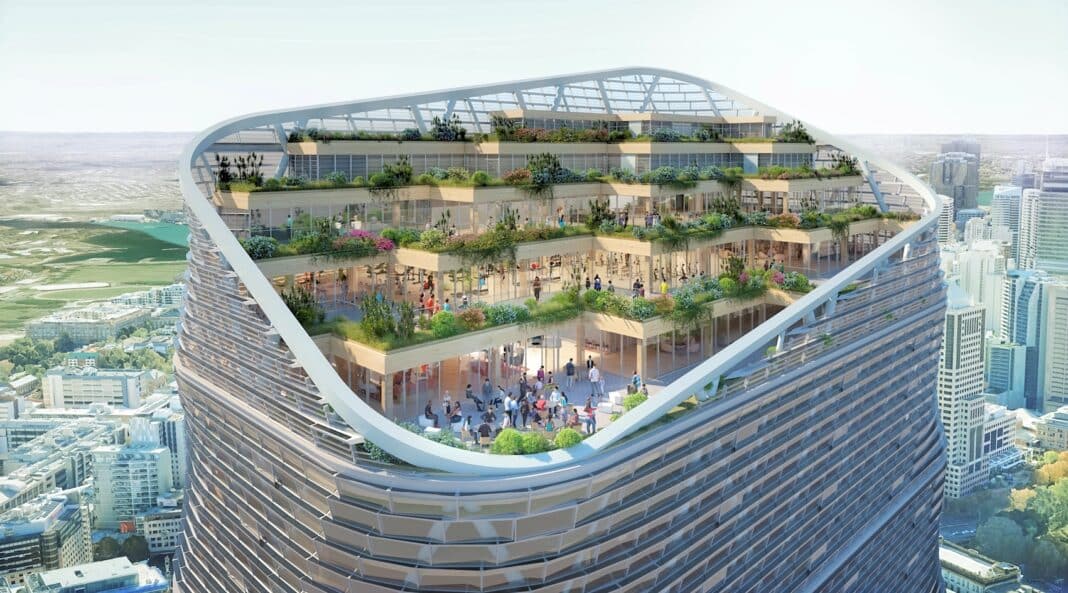The world’s largest mass timber building is now “out of the ground,” and the reinforced concrete core is “out and away.”
That is according to Joe Karten, Built’s Head of Sustainability, who is working on the $1.5b Atlassian Central Tower rising in downtown Sydney.
Speaking to the Australian Financial Review’s Tech Zero podcast, available below, Mr Karten said the “aspiration for the project was to create a lighthouse to effectively change the standard that we will expect for buildings.”
The new build is a joint venture between Dexus, the manager of Barangaroo’s International House, and Japanese asset manager Obayashi, who opened Port Plus in Toyko last year. The project remains “on schedule” for a grand opening in 2026/27.
Last year, Wood Central reported that construction on the 39-storey mass timber hybrid tower adjacent to Sydney’s Central train station will slash CO2 by at least 50% during construction and operate 100% on renewable power.
Employing hybrid timber technology, it will combine steel frames and cross-laminated timber from the seventh story upwards, using reinforced concrete for the basement and lower floors.

In addition to mass timber, photovoltaic cells will be built into the exterior of the building. At the same time, the aluminium used for louvres and window frames will be a super-low-carbon product made at Rio Tinto’s hydro-electric smelter in New Zealand.
The concrete and steel that make up the core of the building are also low-carbon versions of those materials, and the design will maximise natural ventilation to reduce power consumption for air conditioning.
“What Atlassian has done has set the bar high at a global level. And we’re going to see a lot of action around buildings that tackle embodied carbon in a real and authentic way,” Mr Karten told the podcast. He confirmed that the new tower will accommodate at least 5,000 occupants, including Atlassian, which will move into the building in early 2027.

According to Mr Karten, smart companies see attractive, environmentally friendly workplaces as an asset in the talent competition, even if the price tag on such buildings is higher.
“They’ve [Atlassian] made no secret that they didn’t require the standard property developer margins on that project,” Mr Karten said, adding that “they invested some extra money to create a real icon of a project. Now, that’s invaluable because attracting talent—we know in tech, the war for talent is fierce.”
“Generation Y and younger are preferencing sustainability on equal, if not more preferential, terms than the economic or the financial. So it makes sense, “Just building the cheapest building is not attractive; it’s not going to get the right result.”
Last month, Wood Central reported that global real estate giant Hines—which built, refurbished, and now manages over 2,000 buildings worldwide—sees timber-based buildings as a “green magnet” to attract A-grade tenants.
According to David Warneford, the CEO of Hines’ Australia and New Zealand business—who last year finished on the company’s first mass-timber building in the Australian marketplace, T3 Collingwood—the Australian real estate market is primed for “magnet buildings.”
“These ‘magnet buildings’ are sustainability-driven, well-located, technologically efficient, and adjacent to transit,” Mr Warneford told the Australian last year. Significantly, timber drives demand for these magnet assets, not just for the obvious embodied carbon benefits.
“The first thing people do is they go over and touch a column, and they rub it, smell it,” he said before continuing, “and I think it creates a very warm, feeling office environment.”
“I think we often walk onto more conventional floors, and they just don’t offer the same depth of character.”
Down the street from Atlassian, work is now underway to finance a new $2b 55-storey mass timber hybrid tower at the junction of Hunter and Pitt streets known as “Milligan Group Hybrid Timber Tower.”

Last year, Milligan Group received over $465m in capital backing from Merricks Capital to rejuvenate Sydney’s commercial office market – with the Green Building Council of Australia CEO, Davina Rooney, pointing to a growing understanding and awareness of embodied carbon behind the surge in timber buildings.
“Developers know the pathway to net-zero in operations,” Ms Rooney said, which includes removing gas from buildings, securing renewable electricity, and improving ventilation. She added that in the last three years alone, the Green Building Council of Australia has doubled the number of timber buildings applying for Green Star credits.
- To find out how Australia is leading the way in mass timber construction buildings, follow Wood Central’s special feature.







